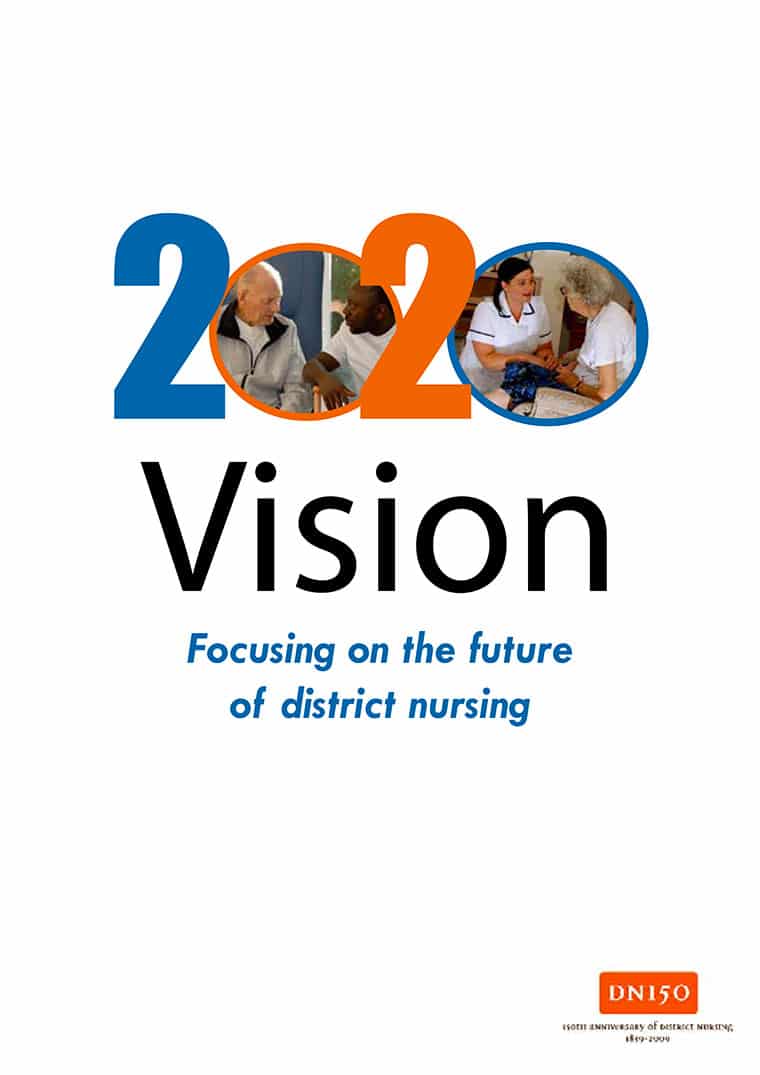The report was based on online and paper surveys of District Nurses. The report summaries the key opportunities and threats facing nurses who manage and deliver vital care to patients in their own homes. The report contains recommendations for nurses and policy makers.
Executive summary
- The values and beliefs that inspired district nursing from the beginning still drive district nursing today: the importance of keeping people at home where they want to be; the relationship between nurse and patient as the prime therapeutic tool; the need to work with the whole family and their carers as a unit; the importance of expert assessment and care, both clinical and social; and the need to promote coping and independence, both practical and psychological.
- District nursing work remains both preventive and supportive. It can also be highly technical, risk-taking, intensive and practical. The nature of the work is unpredictable and changeable; it requires district nurses to be responsive, flexible and adaptable. There are inherent contradictions: district nursing is autonomous, but highly dependent on its networks and contacts; it is responsive to demand, but has to be proactive in managing both long-term and short-term patients; district nurses are intensely proud of their specialism, but also keen to integrate with other teams on a day to day basis.
- The volume of district nursing work undertaken makes it a significant contributor to health services, especially given a growing older population and increasing prevalence of long-term conditions. Even if caseload reviews have reduced current work by a percentage, the contribution to reducing hospital costs and improving people’s lives is enormous. Support for carers, not counted in the official figures, is another significant dimension of district nurses’ work in the home. Both patients and carers greatly value the support of district nurses.
- District nursing services are currently being diluted by loose use of the title, wide variations in pay banding and career structure, reduction in leadership opportunities and lack of recognition of the value of their specialist education.
- It is time to recognise the significant difference between nursing in clinics, surgeries and other clinical premises in primary care; and nursing in patients’ homes. Each needs different skills, training, aptitude and leadership. We should celebrate and develop the home as a setting for health care in the future. Technology will radically change the nature of care that can be delivered in the home, but it will only be acceptable and successful if it is matched by relationship-based, expert nursing care. Both the basic IT infrastructure and investment in developing nurses’ confidence in technology is currently lacking in many cases.
- There is no need to ‘reinvent’ the district nurse. It is however time to reinstate the district nurse. Neither political expediency (enthusiasm for new roles and titles) nor political correctness (integration at the cost of specialisation) should obscure the fact that:
- there is a huge and growing need for nursing in the home, as both politicians and patients want more care to move out of hospitals
- nursing in the home is fundamentally different to nursing in clinical-type settings, in hospital or in primary care, and district nurses are specifically qualified to do it; and
- the principles of district nursing that have lasted 150 years still fit the bill today: in today’s terminology, they are known as ‘better care, closer to home’, ‘patient choice’, ‘integrated care’, and ‘co-production’.
- The current sense of confusion about district nursing’s role can be set aside if district nurses are recognised as ‘practitioners, partners and leaders’ of care in the home, with contributions from specialists as required; while many other nursing colleagues deliver their expert services in the clinical settings of practices, health centres and community hospitals.
- It would be wrong to isolate and protect district nursing from the trend towards commissioning and staffing services on the basis of patient needs and service pathways. It would also be foolish to ignore the opportunities arising from new types of organisation delivering nursing in the home. Instead, district nursing should be seen as a body of specialist knowledge and practical skills that can contribute to many of these pathways – particularly acute care in the home, care of long term conditions and palliative care – as part of an integrated service designed around patient needs.
- The next decade of primary care expansion, which will include much more care in the patient’s home supported by information and care technologies, is uniquely suited to district nurses’ specialist skills. They should have confidence that they have what primary care needs: the trust of patients and families, the unique skills to nurse in domestic settings, and the vision to lead others in this most challenging of territory.
 Back to Resources
Back to Resources 
